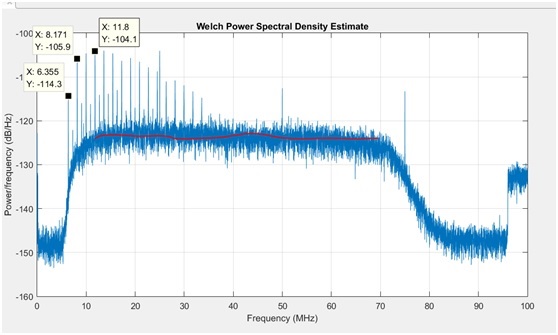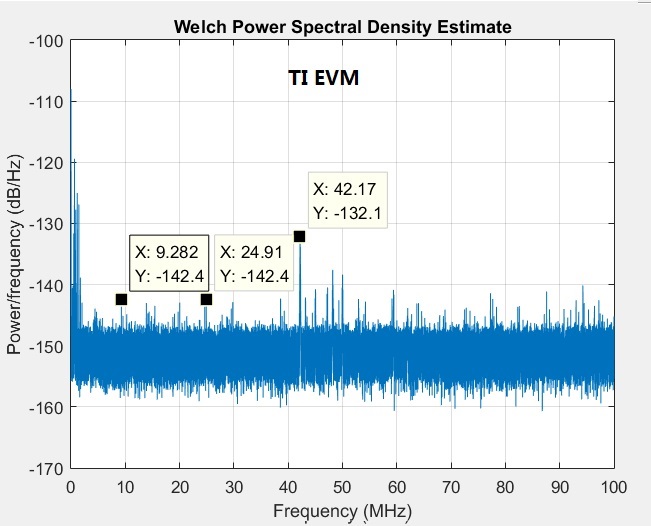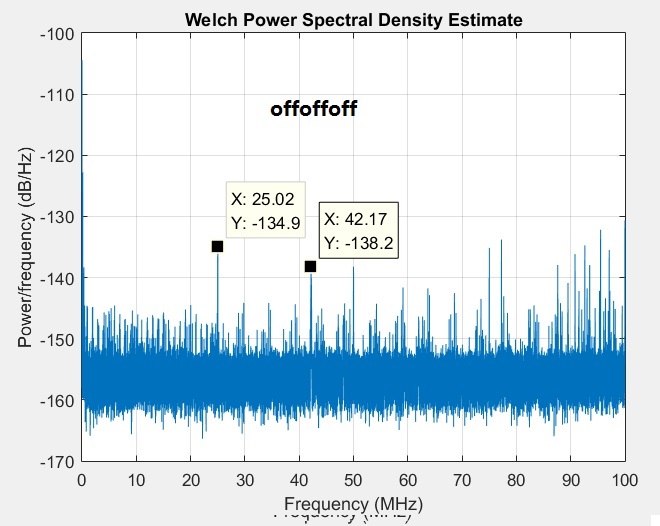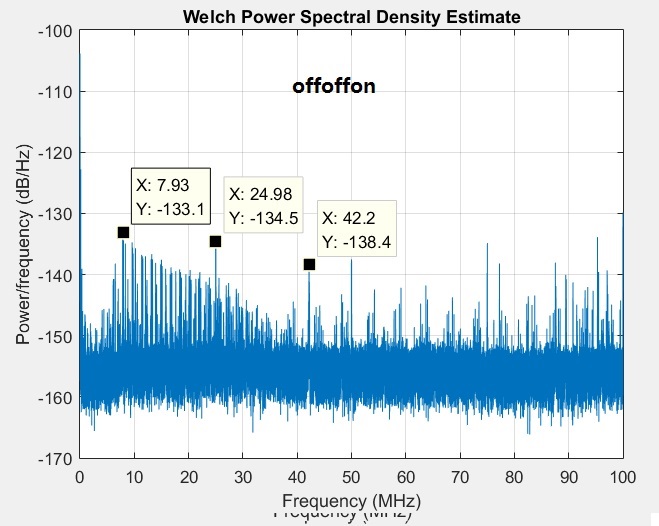I built a three stage amplifier using TI's general purpuse amplifier block TRF37D73, the schem is just like the reference design. The frequency range is from 8MHZ to 68 MHZ, I put a bandpass filter in the output end. I tested it and found there are some weak interference spur in it's output port. Please see the figure attached. Does anyone can tell m e how to eliminate those interference?
e how to eliminate those interference?
-
Ask a related question
What is a related question?A related question is a question created from another question. When the related question is created, it will be automatically linked to the original question.






